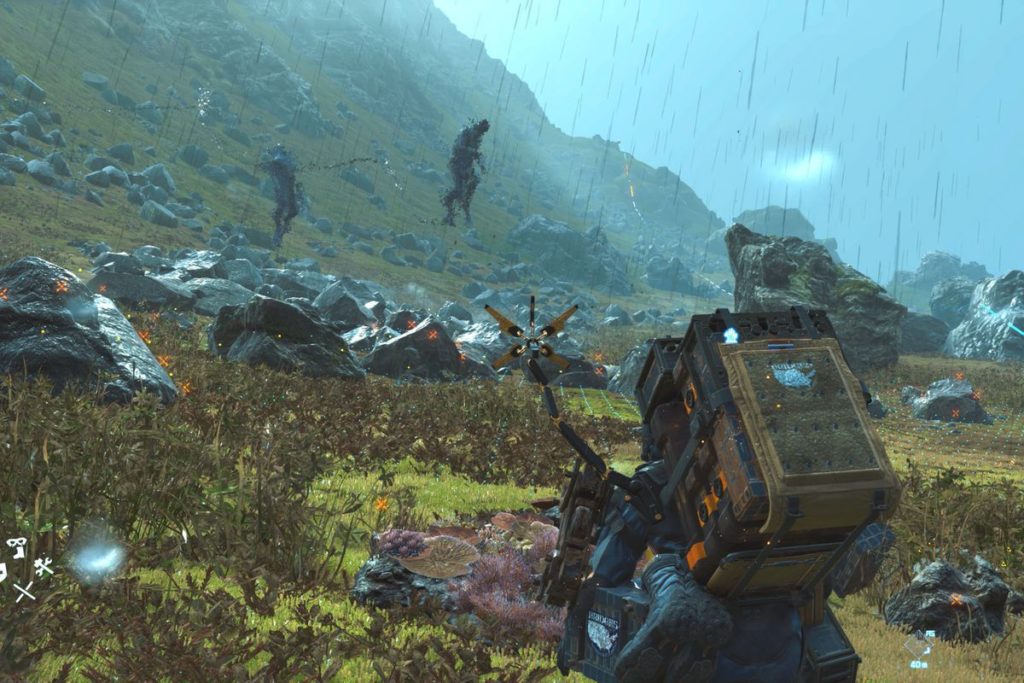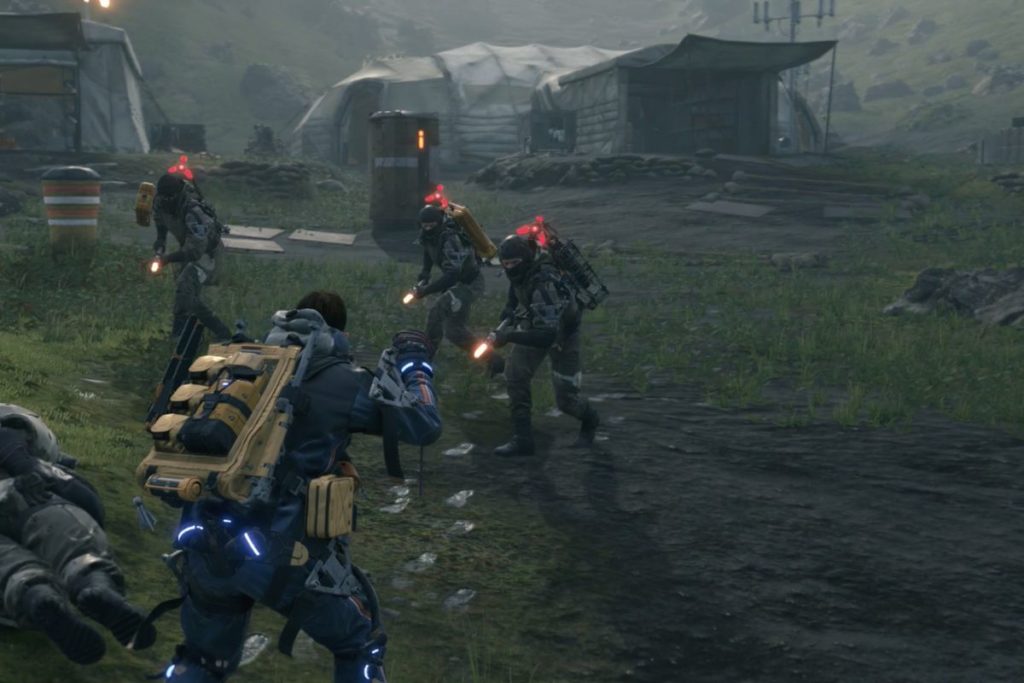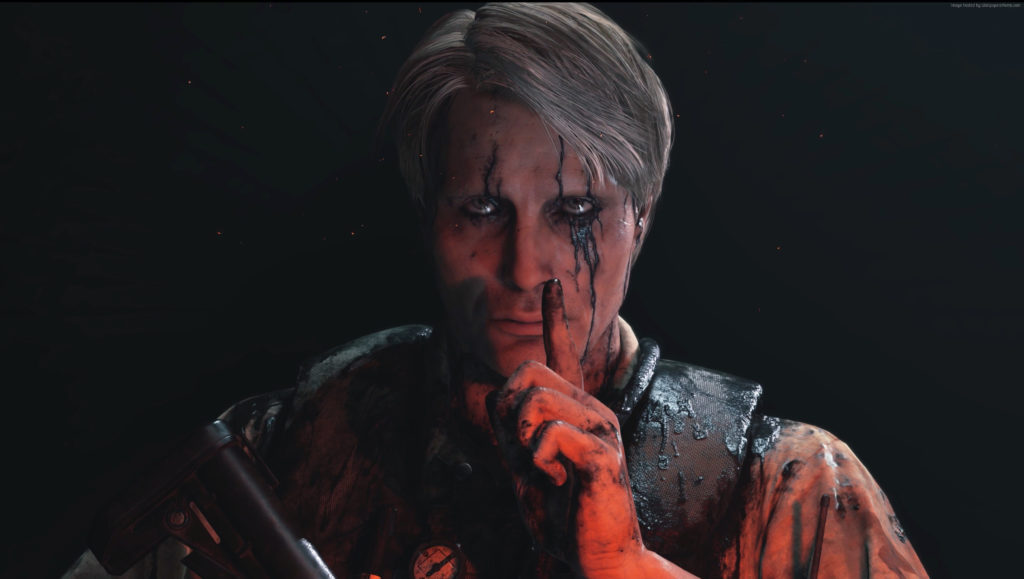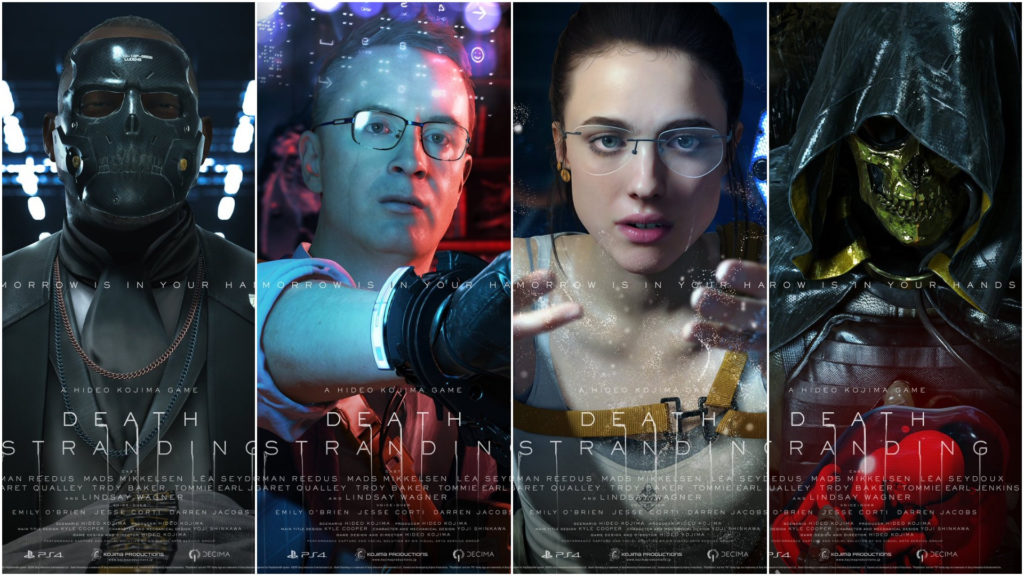Let’s face it. Death Stranding is not your regular video game experience. It has been divisive, to say the least, but it just takes a more attentive look to understand what is happening here.
First, we need to see the bigger picture. Kojima is an important figure in the gaming industry, one of the few guys whose name beats those of bigger studios and publishers. This is a rare ocurrence in a industry where personal talent is often thrown from one side to another as studios are founded and dismantled after each generation cycle. His name, which gained fame because of his previous masterful games (Metal Gear Solid, Metal Gear Solid 4: Guns of the Patriots, and more), created expectations when Death Stranding was announced. It would be his first piece of work after leaving Konami and his Metal Gear franchise behind. The announcement, however, was made quite early, and as a consequence, Death Stranding gave birth to what anything does today: hype.
People who never played a Metal Gear game became aware of Death Stranding after each new gaming event. Not only it had Kojima’s fingerprint, but it also became clear it would feature prominent actors such as Norman Reedus and Mads Mikkelsen. The hype grew with the years, and the amount of people it reached far outmatched those who knew what to expect from a eccentric creator such as Kojima.
Finally, when Death Stranding came out, it was exactly what Kojima’s fans expected: a weird experience filled with a complex plot and dozens of elements coming into play at every corner. Those who knew nothing about Kojima, most precisely the average US video game consumer, came out to meet a game where they rarely shoot foes, where they rarely work against the clock, and where they must burn their minds to understand the complex and weird story put in front of them.
What is Death Stranding?
Well, for starters, Death Stranding is not exactly a breakthrough new experience. It is, however, a collection of traditional gaming elements and genres, combined as tools to navigate through its story. In most regards, this is the traditional japanese gaming experience we know from Final Fantasy games and other RPGs: you travel from point A to B and watch the scenes unfold, facing the occasional foe in between points. The way these elements and genres are combined, however, is where the magic happens.
Death Stranding’s real challenge for the player is in logistics. It is not about shooting big monsters, although you can do that. It is not about slaughtering terrorists, which you should not do. It is about making preparations for a trip and concluding it as fast and as careful as you can. Every mission of the game is about Sam, the protagonist, taking one or more packages across the land and delivering them. Simple, right?
Not so much
Remember, I said the challenge is in logistics. Each trip needs to be carefully thought beforehand. The terrain is a challenge itself, as Sam will need to climb mountains, cross rivers, rocky terrain, snowy peaks, and every other sort of natural landmark. This is not as in other games where you simply move your character forward through the shortest route. No, you are transporting goods which can be damaged, so you need to be careful, you need to think beforehand if you will need climbing hooks, ladders, sprays to fix damaged containers along the way, and a lot more. You can fall if you lose your balance, you can slip, you can trip. Yeah, simply moving around the game is a challenge unlike any you’ve seen in open world games around.

There is more to it. The post-apocalyptic rain quickly degrades anything it touches, even living creatures. When it falls, you need to move faster and find shelter, but that may take you into the territory of the Beached Things, referred as BTs in the game. These entities only react if you get really close to them, but they are invisible to the eye, requiring you to pause for a while to see their silhouettes in the rain. If they get you, they drag you to the ground and put you in a fight against a bigger and more badass foes. If you got the gist of it, facing BTs means falling, damaging your transported goods, and using your resources to fight them, and those are all things you DO NOT want to do in this game. Yeah, the game proposes you to avoid them.
In fact, it urges you to avoid any conflict
The Death Stranding, as the game says early in its story, was an event that basically changed reality for mankind. Body and soul became entangled in their existences, the afterlife became something far more tangible, but the death of someone meant incoming destruction, much like a nuclear explosion obliterating anything around the deceased’s body and creating a new BT. Such events are called “voidouts” in the game.
Society survived by hiding in underground cities, but most of the world had already turned to shit by then. Those who die now need to be incinerated to avoid the voidouts. Remember, the rain makes things age quickly, meaning bathing in it was the same as growing old in an instant and most likely dying alone and causing a voidout. Yeah, humanity need to stick together, deal with the dead bodies with care, and find a way to reestablish the lost world.
So, as Sam Porter Bridges, you need to cross the devastated land and connect people to a new network, developed using technology only discovered after the Death Stranding. It is through this network that people will start to rebuild what they lost. You do not want to kill people, even though you can with the game’s vast array of lethal weapons. If you kill them, be ready to take the corpse to the closest incinerator. Yeah. You get the deal: killing people is a hassle.

Everything Sam does is easier if you avoid conflict. Found BT territory? Make your way around it to avoid being caught. Found terrorists wanting to steal your cargo? Sneaky past them or knock them out with rubber bullets and sleeping grenades. Of course, you could also rebuild the maps’ roads and use a bike or truck to travel through them. If you got caught by BTs or in a firefight against terrorists, however, you better flee than waste your bullets and risk damaging whatever you are transporting.
It is all for the story
Sam will get a mission from a terminal, pick a package, and travel to the next outpost where he will speak with whoever inhabits the place and offer to connect them to the new network. Some guys simply accept the offer as you meet them but most others will ask you to deliver more stuff before joining. After some key deliveries you get more about the Death Stranding, about Sam, and about the amazing cast of actors which makes this more like a Hollywood drama than a typical game. There are nearly a dozen hours of cutscenes to watch, which makes for about a fourth of the game’s playthrough length.
Not only you get dozens of cutscenes to explain the craziness behind the Death Stranding and every people you meet, but you also get a massive collection of texts to read in your room, which helps to deepen your understanding of everything that is going on. It is a very busy story with heavy terminology and a lot of references to our current problems as a society. It is, at some extent, a very political game like any other Kojima’s game before it, and this time it is delivered with faces from actors many people know.
In general, the plot is heavy at the early hours and by the end, leaving the mid-game much more focused on the gameplay experience as you walk around the main map delivering stuff and reaching remote places.

And the Decima engine does the job
These places you visit offer some of the best-looking visuals of this generation. Death Stranding is not only powerful with its facial expression and detailed characters, but also with its massive open-world map. You get waterfalls, snowy peaks, blizzard storms, the rain, and a lot more elements which make for your trip to be a visual feast at every corner. The game performs really well too, although in the post-game it seems the amount of structures around the map bring some frame rate issues when you move fast by zip-lines or vehicles. You see, you not only build bridges, charging stations, and safe houses around the world, you can also access those created by other players, and as you progress through the game and level up each area, these online structures become more and more abundant
And that’s where the heart of the game lies
You get to travel from point A to B, surely. You need to deal with terrain, BTs, and terrorists, yes. You are, however, not alone.
Death Stranding offers a quite different online component to it. You play the game as a single-player experience, yet there is a lot going on in terms of a multiplayer component. Everything you build in the world, every sign you post, and every random package you lose become part of the online world of Death Stranding. Other players can see what you built and what you lost, and they can use it, upgraded it, pick up your lost package, and ultimately build a useful network of structures combining their own and yours.
Of course, the same counts to you. As you play through the game you will see structures represented by green icons, which were created by some other random players. You may find a helpful rainfall shelter in the middle of a BT territory, you can see a bridge crossing a massive crevasse to the other side, and even some zip-lines reaching far places. If you use them, whoever built them get a “like” and an alert in their game. If you find that structure really helpful, you can manually give “likes” to that player. As you play the game and build useful structures around the world, you get those likes too and start to see that what you left behind is helping others. Ultimately, the world of Death Stranding becomes a massive hub with dozens of structures scattered around the map, some really helping you.
The likes you get and give to other players works like experience points, raising your ability to connect with others and see more of other people’s structures. You do not interact with them, you only see their gamertag and avatar, but that is enough to give you a sense that you guys are helping each other in the game, a sensation which I haven’t felt in other multiplayer games simply because there is rarely anything as “lonely-yet-co-op” as Death Stranding.

Yet…
Sadly though, Death Stranding does hide a lot of its potential behind busy work. The main campaign takes around 50 hours or so, and during that time you will likely level a few outposts, but most of the interesting prizes are locked behind very grindy tasks. Equipment upgrades, improved boots and climbing gear, new weapon schematics, customization options, and a lot more can only be unlocked if you level up the regions of the game, which takes a lot of time and effort and is unlikely to be done until after you’ve beaten the game. By then, however, the most alluring element of Death Stranding, its story, is gone, and you are left just doing deliveries for the sake of filling the 5-star rating of an outpost or simply for the mindless fun, which goes completely against what the game proposed earlier.
Well, it is still fun to play though. You can put protective pads on your shoulders and thighs and pack half a dozen non-lethal guns to storm a terrorist’s camp, or bring a ton of grenades to blast away BTs, yet it would be a lot more interesting if you could’ve used up that arsenal to tackle the game’s main quest.
This is the type of game we need
 (4.4 / 5)
(4.4 / 5)
Its issues are not enough to bring down the rest though. After the credits roll and maybe after a few more hours exploring the world, Death Stranding leaves an impact unlike any other open-world game. Never before the simple act of traveling have been explored in terms of depth and difficulty as in here, much less with a crazy story with Kojima’s fingerprints all over it. It’s a game that may not entice those wanting to shoot stuff or rush through things, but for anyone else this may be perhaps exactly the type of game we needed right now, more focused on real exploration and storytelling then immediate feedback and competition.
Give it a chance. It may starts slow, but it can really grow on you.
Summary
-
Production
-
Content
-
Polish
-
Concept
-
Fun
